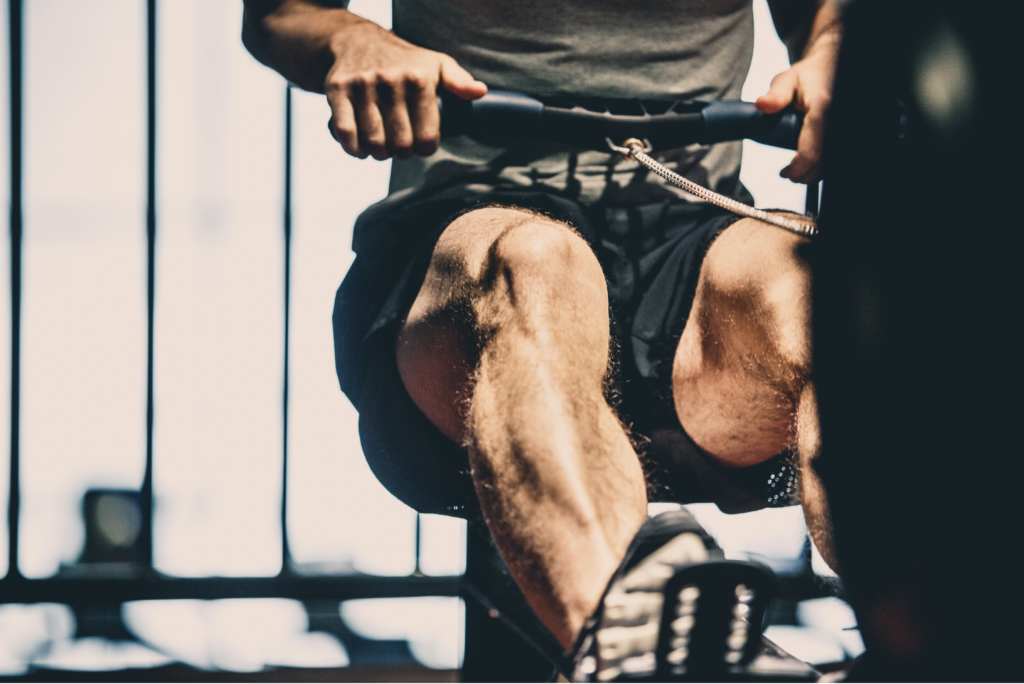Cardio exercises are a cornerstone of a healthy lifestyle, offering numerous benefits for your body and mind. Do you ever find yourself completely out of breath just by doing a basic activity or a small task? Most of the population today is struggling to keep up with the daily stressors of life. This can be because of sedentary lifestyles and most jobs are behind desks were someone is seated for most of the day. Whether you’re looking to lose weight, improve heart health, or boost your overall fitness, incorporating cardio into your routine is essential.
For absolute beginners, understanding the importance of cardio and how to get started can help build the motivation that leads to discipline for consistent improvement. This guide will help you understand why cardio exercises matter and provide practical tips to help you begin your cardio journey. It does not have to be the dreaded part of the workout, but it can actually be enjoyable.
Table of Contents
Why Cardio Exercises Matter
Heart Health
- Strengthens the Heart: Cardio exercises improve the efficiency of your heart, allowing it to pump more blood with each beat, which reduces the risk of heart disease. It also improves circulation in the body to provide critical nutrients to various areas of the body.
- Lowers Blood Pressure: Regular cardio can help lower blood pressure by improving the health of your blood vessels.

Weight Management
- Burns Calories: Cardio exercises are effective at burning calories, which can help you maintain or lose weight.
- Boosts Metabolism: Regular cardio can increase your metabolic rate, helping you burn more calories even at rest. The more you exercise you will see improvements in the way your body digests food and regulates how it stores different carbohydrates and fats.
Improved Lung Capacity
- Enhances Breathing Efficiency: Cardio workouts improve lung capacity and the efficiency of your respiratory system, making everyday activities easier. Your blood carries oxygen throughout your body and improved lung capacity creates an environment where oxygen can reach critical organs and body parts.
Mental Health Benefits
- Reduces Stress: Cardio exercises release endorphins, which are natural mood lifters that can reduce stress and anxiety. Stress and anxiety contribute greatly to the reduction in effectiveness of the current generation. Reduction of stress is going to produce clarity of mind and an ability to strengthen the way your central nervous system responds to stimuli.
- Improves Sleep: Regular physical activity can help you fall asleep faster and enjoy deeper sleep. You are going to crave sleep because you know its beneficial for your body and because you are going to feel more of a desire to rest.
Increased Energy Levels
- Boosts Stamina: Cardio workouts increase your stamina and reduce fatigue, giving you more energy throughout the day. More energy throughout the day means that you can perform at a higher level during daily activities and routine activities become easier to do because your not so out of breathe.

How to Get Started with Cardio Exercises
Choose the Right Activity
- Find What You Enjoy: Select cardio activities that you enjoy, such as walking, running, cycling or swimming. Enjoyable activities are easier to stick with in the long term. If you find a training buddy or take your family with you, you will be able to keep each other accountable and help each other reach your desired goals. I can not stress how important it is for families to exercise or do physical activities together. Most people think its just about them, but it is a great opportunity to bring children and your spouse alongside you and improve together.
Start Slow
- Begin with Short Sessions: If you’re new to exercise, start with short sessions of 10-15 minutes and gradually increase the duration as your fitness improves. Don’t think that you’re going to start running a marathon in 1 month. It takes time and that is ok. Lay the foundation of good habits and routine and then you will see the gradual improvement.
- Warm Up and Cool Down: Always begin with a warm-up to prepare your body and end with a cool-down to help recovery. These are critical for preparing the body for exercise and for properly bringing the body down from a workout which also promotes physical longevity.

Set Realistic Goals
- SMART Goals: Set Specific, Measurable, Achievable, Relevant, and Time-bound goals. For example, aim to walk for 20 minutes three times a week as you walk the dog around the neighborhood with the family or by yourself. You can also read the post titled How To Set Achievable Fitness Goals, to better understand goals and how to actually follow through with achieving them.
Mix It Up
- Variety is Key: Incorporate different types of cardio to keep your workouts interesting and work various muscle groups. This can also help prevent boredom and overuse injuries. Doing the same program for a prolonged period of time can become daunting to many people. It is important to stay on a consistent exercise routine so that it becomes a part of your lifestyle. However, many different workouts, exercises, or activities can assist in promoting great healthy habits for you and your family. At the end of the day, do the activities you want and enjoy doing and the consistency will follow.
Monitor Your Progress
- Track Your Workouts: Use a fitness tracker or journal to monitor your progress and stay motivated. Seeing your improvements can be a great motivator. It can be as simple as a watch that counts your steps and tracks how many calories are burned in a day. There are also very complex products that can truly assess many aspects of your overall health and fitness depending on what you want to track. You cant go wrong with a fitness watch and a journal to write down activities, heart rates, steps, calories burned, and even when during the day stress spiked your blood pressure so you can adjust as necessary. More to follow on this in later posts.
Stay Consistent
- Make it a Habit: Consistency is crucial for reaping the benefits of cardio. Try to incorporate cardio exercises into your routine at least three times a week. If you incorporate the family into this time, you will all be able to enjoy improving your fitness capability and personal relationships.
Listen to Your Body
- Avoid Overtraining: Pay attention to your body’s signals and avoid pushing yourself too hard, especially when starting out. Rest days are essential for recovery. Don’t overdue it especially in the beginning. As you progress in your training there will be times that you will see your body is ready to hike up the intensity but be very cautious at first to avoid any potential setbacks.
Overview of the Most Popular Types of Cardio Training
Running and Jogging
- Description: Running and jogging are straightforward cardio exercises that can be done outdoors or on a treadmill. They are excellent for improving cardiovascular health, burning calories, and boosting endurance.
- Benefits: Enhances cardiovascular fitness, strengthens muscles, improves bone density, and aids in weight loss.
- Getting Started: Start with brisk walking and gradually increase to jogging. Use a proper running shoe to prevent injuries. I will go into very great detail about shoes and why it’s important to choose the right shoes for training.

Cycling
- Description: Cycling can be done on a stationary bike or outdoors. It’s a low-impact exercise that is gentle on the joints while providing an excellent cardiovascular workout.
- Benefits: Improves cardiovascular health, builds lower body strength, and enhances mental well-being.
- Getting Started: Begin with short sessions and gradually increase the duration and intensity. You can join a class, train on your own or exercise with a virtual trainer on a machine.
Swimming
- Description: Swimming is a full-body workout that improves cardiovascular fitness and muscle tone. It is especially beneficial for those with joint issues due to its low-impact nature.
- Benefits: Enhances cardiovascular health, builds strength, improves flexibility, and is great for all fitness levels.
- Getting Started: Start with basic strokes like freestyle or backstroke and gradually increase your swimming duration. Join a swimming class if needed or ask a friend that is proficient for some lessons.
High-Intensity Interval Training (HIIT)
- Description: HIIT involves short bursts of intense exercise followed by recovery periods. It’s highly effective for burning calories and improving cardiovascular fitness in a short time.
- Benefits: Burns more calories in less time, improves cardiovascular and metabolic health, and boosts endurance.
- Getting Started: Begin with simple exercises like push ups, air squats, lunges, jumping jacks or sprinting, followed by rest or low-intensity exercises. Gradually increase the intensity and duration of the high-intensity intervals.
Walking or Hiking
- Description: Walking and hiking are the most accessible forms of cardio exercise, suitable for all fitness levels. It’s easy to incorporate into your daily routine. Family walks or hikes are always a wonderful time and can do wonders to your relationship with your spouse and kids. This is also a perfect opportunity to exercise the dog and keep both of you healthy.
- Benefits: Enhances cardiovascular health, aids in weight management, improves mood, and boosts energy levels.
- Getting Started: Start with 10-15 minutes of brisk walking and gradually increase your pace and duration. Aim for a daily walking routine.

Rowing
- Description: Rowing is a full-body workout that targets multiple muscle groups while providing an effective cardiovascular workout. It can be done on a rowing machine or in a boat.
- Benefits: Builds upper body strength, enhances cardiovascular fitness, and improves coordination.
- Getting Started: Begin with low resistance and focus on your form. Gradually increase the resistance and duration of your rowing sessions.
Conclusion
Cardio exercises are an essential part of a healthy lifestyle, offering numerous benefits for your physical and mental health. Many people disregard cardio because they have had a bad experience in the past, however, if you think of it as wanting to strengthen your heart and not be out of breath when doing most of your daily activities its worth trying it again. By choosing activities you enjoy, starting slow, setting realistic goals, and staying consistent, you can successfully incorporate cardio into your routine and actually enjoy it.



